In 2008 I’d resurrected my interest in film photography and decided it was time to add a Canon EOS camera to compliment the AE-1 Program that I’d been using exclusively to that point. I’d gathered a small collection of EF lenses for use with my 40D such as the 85mm F1.8, 17-40 F4 L and 50mm F1.8 and it seemed a shame not to be using them in their full frame format on a film body.
Initially I scoured eBay for an EOS 5, but with my small student budget at the time I regularly found myself outbid or out priced before I’d started. One body that kept coming up in those searches was the EOS 50 (55 in Japan, Elan II in America). After some research I decided to try and buy one of those instead and eventually won one for approximately £25.
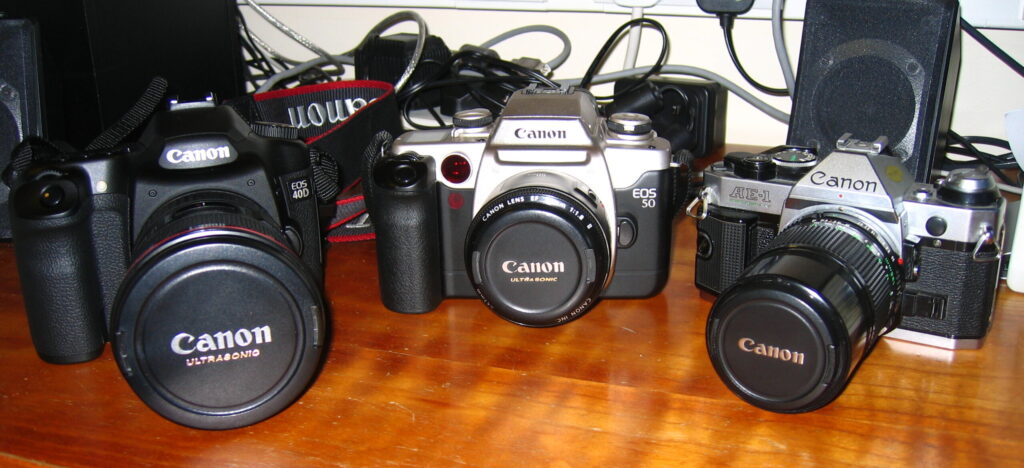
In short, I loved that camera and took some of my favourite film photos of that era on it. It felt so solid and reliable that I also used it alongside my digital bodies at a couple of weddings. Sadly, I sold it along with my digital equipment around 2012 and regretted it ever since. This year, I picked up an EOS 55e and fell in love all over again.
In this post:
- The making of a future great
- Where does it fit in modern times?
- EOS 50 – The Goldilocks camera
- Your mileage may vary
The making of a future great
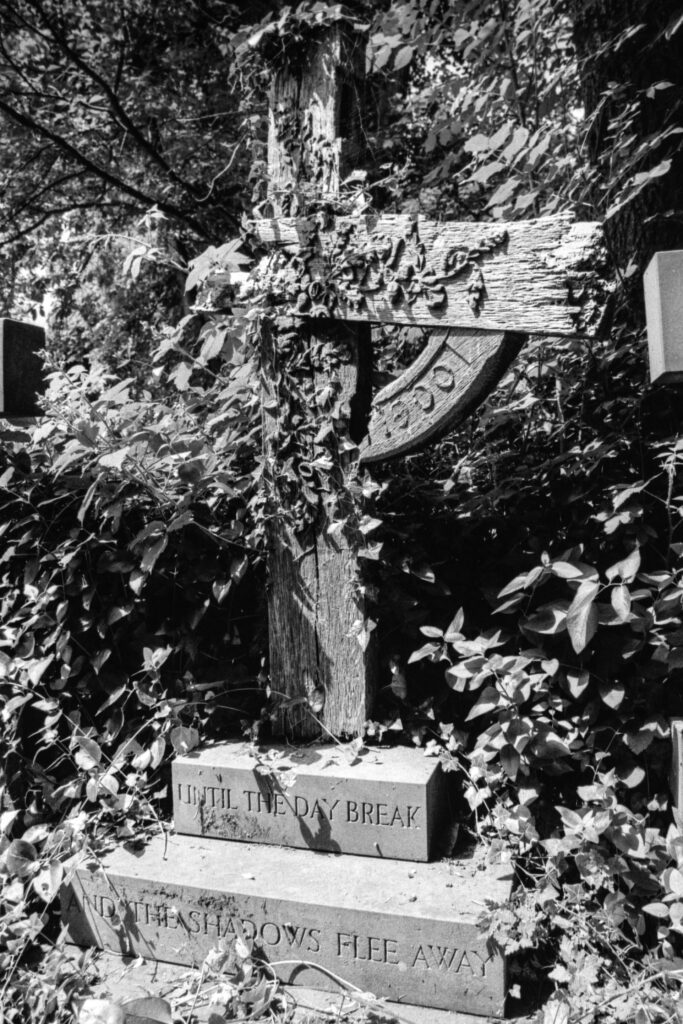
The EOS 50 was launched in late 1995 and Canon were keen to push their latest technology in the form of eye controlled focus. Cameras with this ability were designated with an E after their name and it was possible to buy completely identical bodies with just this one feature either present or removed.
Eye control focus had debuted with the EOS 5, a body aimed at “serious amateurs” or as a backup for professionals using the 1 series and so it’s inclusion in the EOS 50 was a trickle down of technology through the range.
These “E” bodies had hardware which followed your eye movements in the viewfinder and used this information to determine which of the three focus points should be used when you either half press the shutter or pan a shot during continuous shooting.
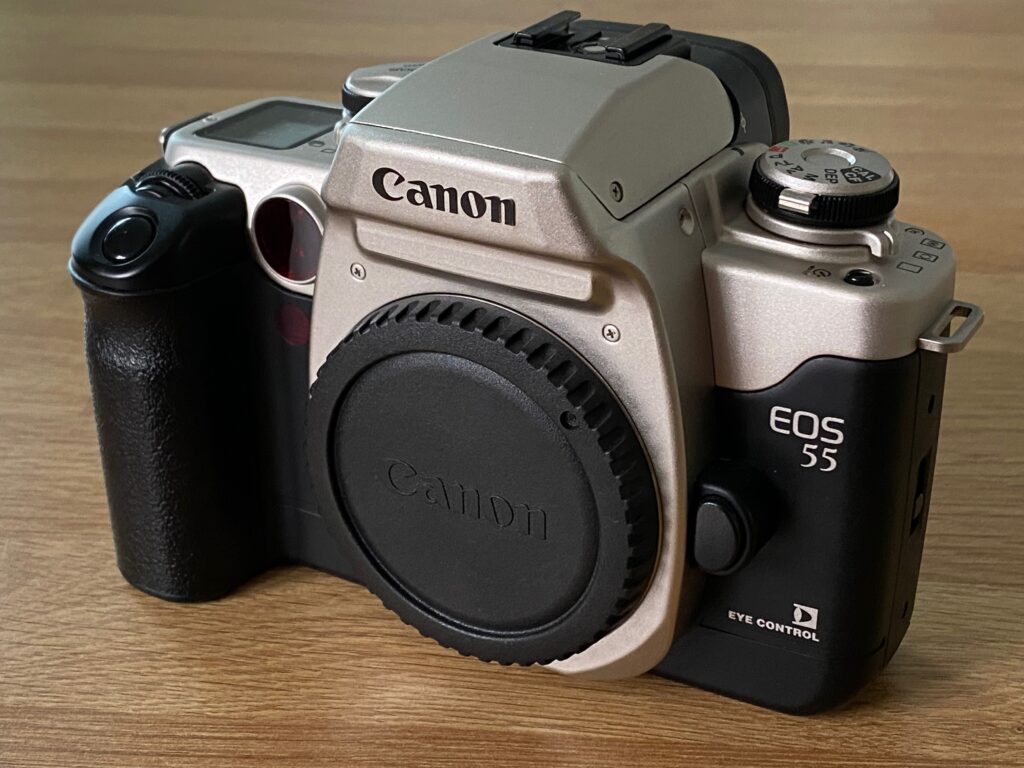
Considered ground breaking at the time, it was a reasonably primitive and relatively flaky feature that worked only in landscape orientation! The system on the EOS 50 was an evolution of the implementation used on the EOS 5 and with it came some subtle improvements in both speed and usability – most notable of which was that it worked in both portrait and landscape.
Canon stuck to their guns, convinced this was a killer feature, and continued to refine eye control until nearly the very end of their development of film SLR cameras. In 2004 the EOS 30V marked both the pinnacle and end of this feature and it has not made an appearance again in any other camera to this day.
AF control, however, was not the only story as far as the EOS 50 was concerned. It improved on previous models in nearly every way, offering a combination of build quality and features that effectively made every other model except for the EOS 1 inferior.
It is easy in retrospect to see the EOS 50 as a “decent, but there’s better” body. The truth is that when launched it was a formidable, future proof offering that had been packed with the latest technology, decent AF performance, improved direct control over commonly used features and typical Canon ergonomics and handling. There was very little in 1995 that could seriously compete, above it was only the EOS 5 and 1, and the EOS 5 was seriously beginning to show its age despite still being a very competent imaging tool.
Where does it fit in modern times?
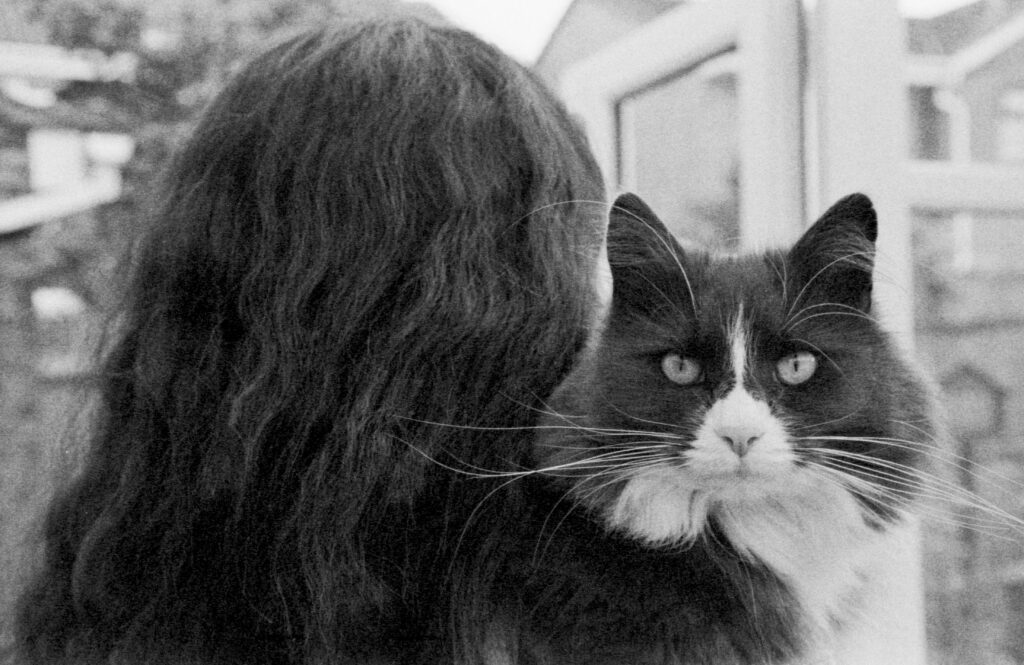
As time rolls on, older cameras inevitably begin to become collectors items. Models that were more expensive, out of reach during their launch to the average consumer usually command the highest price premium.
This is true of the EOS 1n, 1v, 3 and 5. These bodies fetch large sums of money now for a simple reason – there are no better image making tools for a film photographer who wishes to use EF lenses. The 1v was the absolute pinnacle of everything Canon ever knew and implemented in a film camera. If you have £300-£500 burning a hole in your pocket and a desire to experience what it was like to be a press photographer in the year 2000 then buy one, there’s nothing to think about.
The question, then, is why would you consider buying a more lowly camera than the ones previously mentioned? After all, if they were the best that were ever developed then everything else must be fairly pointless in terms of buying a decent photography tool.
It is more subtle than that.
In the keen amateur/budding professional segment, Canon only released approximately four models after the EOS 50. Notably, these included the EOS 3 (an absolute monster) and the 30V. Both of these bodies are superb, desirable cameras to this day. They are also still very expensive.
Do these bodies produce better images than the EOS 50 or indeed any other camera in the EOS range? The answer is… no. It actually doesn’t matter which EOS body you use, if you put the same lens on and the same film inside and expose with the same settings you will get equal image quality from the cheapest 3000 model to the most expensive 1 series.
Now things appear to have become even more complicated! Why buy any body other than the cheapest you can find and just spend all your money on the best lenses you can afford to improve image quality?
This excellent question requires more consideration.
EOS 50 – The Goldilocks camera
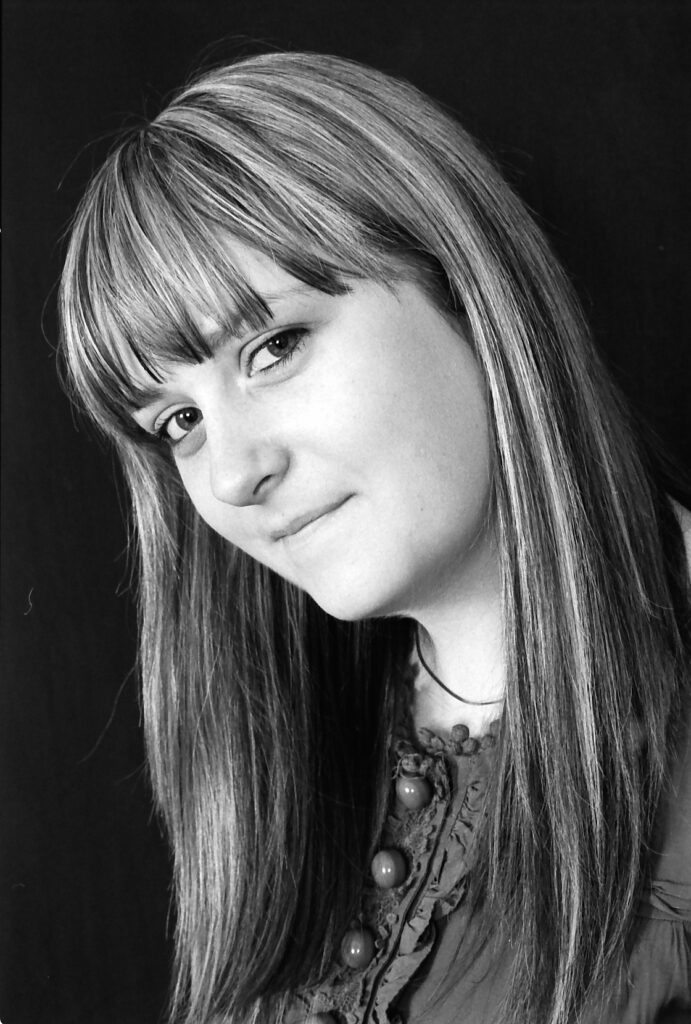
Let us get one thing out of the way, there are certain niche applications that absolutely do require more expensive camera bodies for the features they offer. Some examples would be continuous shooting, fast tracking of moving subjects such as animals or cars and specific situations where really accurate spot metering are required. Furthermore, it is absolutely the case that the quality of lens used to take a picture matters far, far more than the quality of the camera body.
There are very few people in late 2022 who are shooting sport or wildlife on safari with a film camera. Therefore, we can presume that most film photographers are shooting relatively static or more sedate subjects and this removes the need for the finest AF performance ever seen on a camera.
Consequently, we can level the playing field somewhat by making the assumption that features like 45 point AF, stupidly fast 1/8000 shutter speeds and 11 frames per second capabilities are nice to have, but really not essential in any way to modern film photographers.
To return to our previous question, why don’t we just all go and buy the cheapest body there is?
Honestly, having used quite a few £1-5 EOS film bodies recently I can confirm this is actually a pretty hard question to answer. The later entry level Canon film bodies like the 500 and 300 were just so capable you have to do some digging to really start to reveal their weaknesses.
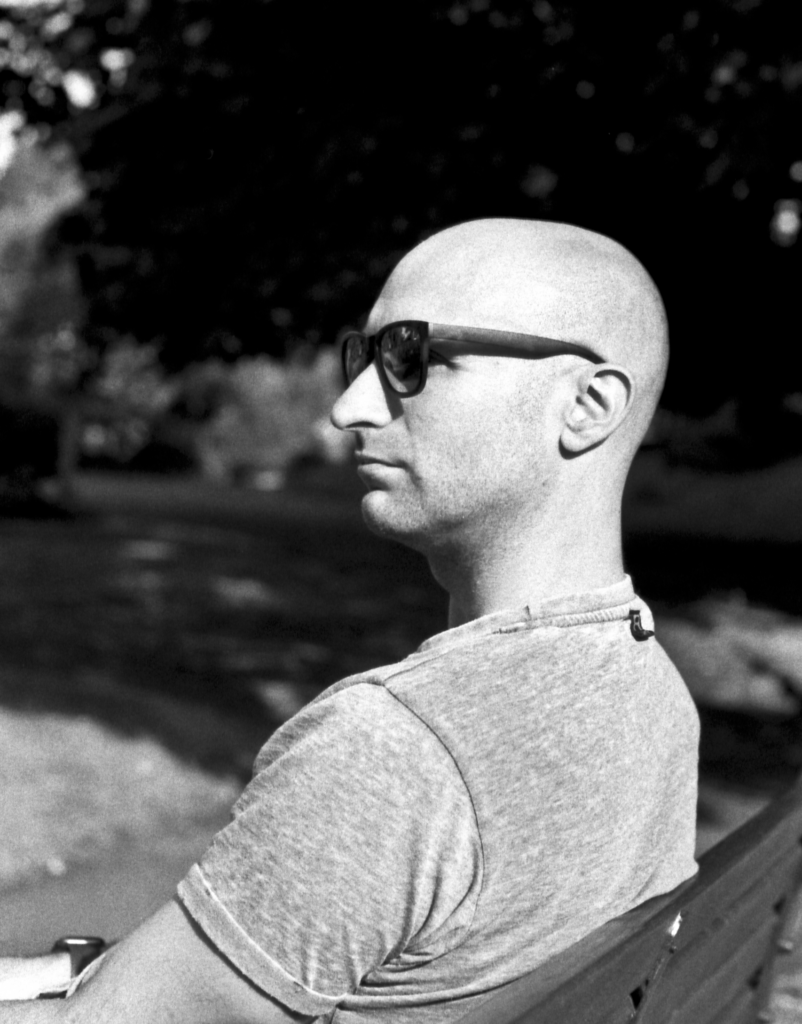
You may have guessed that even though I have a cupboard full of EOS film bodies, the 50 is my go to. Why? It all begins with handling.
Although cheaper bodies like the 1000fn, 300 and 500 are perfectly usable and comfortable, there was a lot more thought that went in to the ergonomics and balance of higher end models. The EOS 50, in my opinion, is perfectly weighted. It sits exactly in the contours of your hand, the grip is the perfect size and no compromise has been made in terms of control placement. Everything is where you’d intuitively expect it to be and is easily controlled whilst holding the camera to your eye.
On cheaper bodies, there had to be a tight control over costs in order to bring them in on budget. The EOS 50 is an example of where that extra money for a more expensive model went. As you go up the range you would expect things like AF to improve, but there are also more subtle quality of life improvements that decrease the obstacles between you and the image you want to take. The 50 has more control dials and switches than any other Canon I’ve used and whilst sounding counter intuitive, this goes a long way to increase the usability.
The inclusion of high resolution LCD screens and touch sensitivity has made modern digital cameras straight forward to use and operate. Their presence makes browsing through long menus and configuring countless options easy due to the clear, large display in front of you. In the days of film cameras this just wasn’t feasible and as cameras increased in complexity it necessitated some serious design work to make this growing array of options easy to access and change. On lower end cameras, changing custom functions isn’t simple, on the 50 and later models it’s trivial because nearly everything has a dedicated button or dial.
Now we are getting somewhere, but what about those higher end offerings? This camera offers control over metering, shooting modes, reasonable continuous shooting, half decent AF, robust shutter and build quality and top ergonomics. It also has just enough customisation to be almost perfect for the modern film photographer – such as the ability to rewind a film but still leave the leader out for easier developing. It is all there.
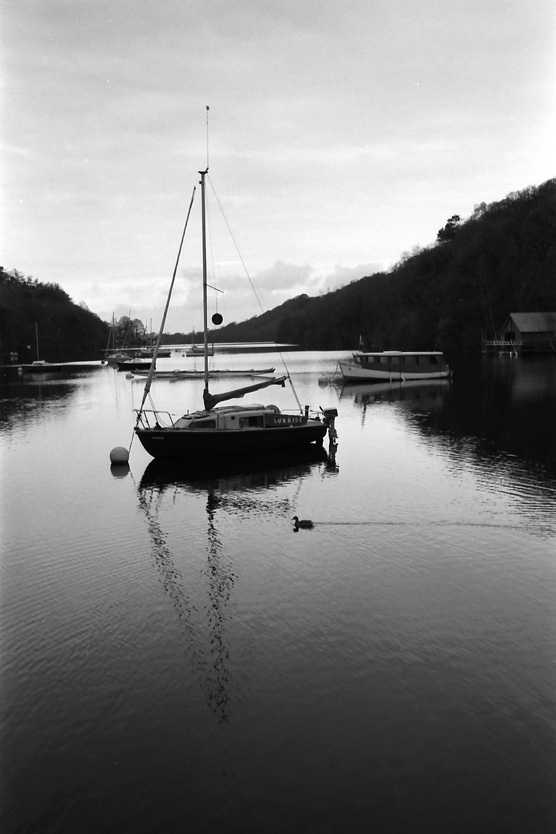
An EOS 1 or 3 would make me feel like Lord of the Cameras, but honestly, they offer nothing more that I actually need. Sure, they’re faster, they’ve got more AF points, they probably lock focus more quickly, they are more robust but… I don’t need any of that.
Not wishing to sound like a business studies textbook, there is no escaping the cost/benefit calculation that goes into most purchasing decisions. The higher end models and their ever rising prices now make it increasingly more difficult to justify purchasing one. The improvements they bring over cheaper offerings no longer make sense in a time when if you want to shoot 500 frames at a race track you would have to be clinically insane to shoot film. Either that or you’re a millionaire and don’t mind spending £3000 on film for one day.
And this is where the EOS 50 wins. It is the Goldilocks of Canon cameras right now, offering just the right set of features at just the right price. Currently, it does not seem to have achieved the desirability of more luxury cameras and so prices are stupidly low at around £25-40 for a really decent copy. The EOS 50 came late enough in the development of film cameras to have ironed out pretty much all of the problems earlier models may have had, it is quick enough for most needs and ergonomically it is superb. It has everything you need to take amazing pictures without wishing it had that something more.
Your mileage may vary
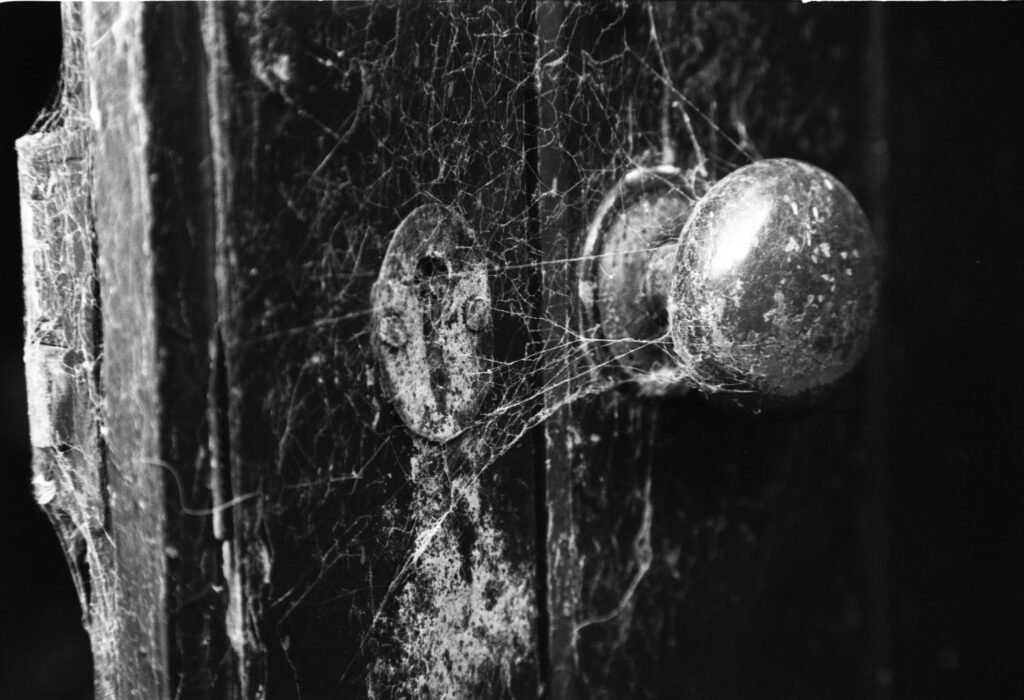
Of course, anyone can advocate for almost anything in a relatively convincing manner if they try hard enough. There are people out there who I’m sure think that this entire argument is utter nonsense and… they’re right. They’re right because it is their opinion. They’re right because everyone has different needs that end up defining their preferences and perspective. They may be right because they’re absolutely loaded and cost doesn’t come in to a purchasing decision. If this is you, please get in touch and I’ll let you help me pay off my mortgage. I know, I’m thoughtful like that.
I wrote this article because for a large proportion of people, weighing up the cost to benefit ratio of an item is normally the deciding factor in a purchasing decision. Buying at the “sweet spot” is an art form and often requires a deep knowledge of technology and the fact that the most desirable, new products will always demand a premium, but in five years time will be common place and a 1/10 of the price. Right now, I believe the EOS 50 is the sweet spot of AF film cameras.
Film photography has seen a wonderful resurgence and it looks like it is here to stay. Consequently, camera prices have risen steadily over the last 10-15 years and now some models which were once almost worthless are suddenly commanding absurd amounts. The average person who wishes to experience the best that the past had to offer has now missed the boat in terms of picking up a bargain. Even so, there’s always an attractive alternative to those best of the best options, and for me, you’d be mad to dismiss the perfection that is the EOS 50.
Share this post:

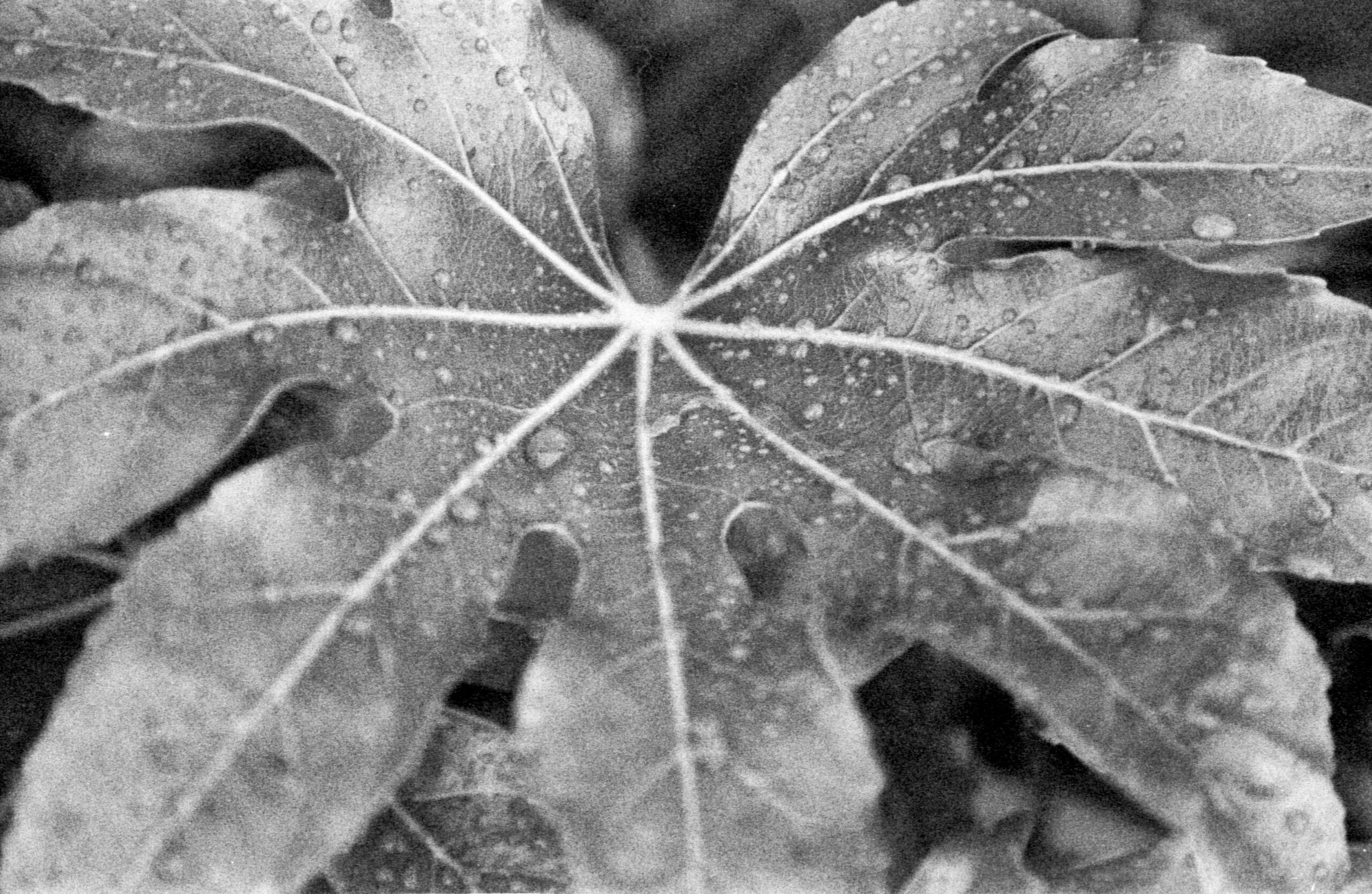


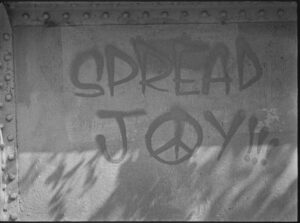
I’ve had my mint condition Canon 50E (with battery grip) for a couple of years now, and I absolutely adore using it. Your article hit every nail on the head about the 50 series. Canon just got everything right, by the way the eye control works beautifully for me, and I wear glasses. I’m now after a 50 body, but I’m really fussy about condition, prices have risen sharply. The 50 series seems to be in demand again. I also shoot with a Canon dslr, but also own a mint 300V and a 500 film body too. The 300V is tiny in comparison to the 50E, but it’s a joy to use.
Thank you.
Regards Rob (UK).
Nice to find a fellow EOS 50 fan!
I acquired a 50 from a charity shop for £5 but the film door lock was broken. £6 and about 10 minutes work and I had a new lock fitted. It’s a lovely camera to use, I haven’t used the eye focus bit, and I tend to grab the 50 if I feel the need to shoot film. I do have a 30 that I was given but I much prefer the 50 even though both cameras are virtually identical.
There’s just something about them. I must admit I’ve neglected mine recently, I go through so many cameras it can be hard to find a reason to come back to some of them!
As the owner of an EOS 3, EOS 30 & EOS 300X – I came here to argue with your premise!
However after reading your blog I kinda agree with you, the EOS 50 is not only a very competent camera at a very attractive price, but it’s also well designed ergonomically and I think one other important point is that it looks very different to every other EOS camera made.
It’s price is probably brought down due to the design flaw that means the door latch often breaks.
(I have bought many “untested” 50s and fixed them with the £6 replacement latches that are still available from Hong Kong before selling them on fully tested).
I must agree that the combination of price, looks, performance and ergonomics make it a very attractive buy – though I might suggest the 300X might be another option for those youngsters who’ve never shot film in a previous life – the large LCD on the rear, 1/4000 shutter speed and E-TTL II make it as close to a DSLR experience as possible. Though the 300X actually sells for more than a 50.
The 50 can’t (for me) match the powerhouse that is my EOS 3, nor does it focus and expose as exquisitely as my 30 either – but I think you’re right – it’s definitely a contender as an absolute bargain film SLR camera, especially for someone returning to film.
It’s absolutely all about that delicate balancing act of price, ergonomics and features. The auto focus is the weakest area of the 50 for me. I’m an avid user of the 300x – it’s my favourite compact street camera right now but the prices they go for are just absurd. The 300V is almost identical for next to nothing and sadly right now I’d have to recommend the V over the X purely from a budget point of view. You’re lucky to own a 3, they’re now the stuff of dreams for most people.
Thanks for reading and thanks for your comments.
I am clearing out and have found my old Canon EOS 55, trip down memory lane using a camera with film ! I loved it.
My latch door is broken funnily enough, I have no idea if the camera is working – so do you know if there is somewhere to list in case there is someone who would like it to try and fix or use it for parts?
I tried googling but to no avail and came across your blog.
Thanks.
Thanks for this post! I love my Canon EOS 55e because it takes wonderful pictures, feels good in my hands, and reminds me my old film camera days before the advent of DSLRs. For my purposes it does have some flaws however.
1. The battery compartment is a teensy bit longer than the actual battery – just enough to lose contact every now and then. It took me a while to figure this out, as I thought the camera was defective at first. Now I have to keep a piece of thin cardboard I cut out at the top of the compartment to keep the contact steady.
2. The diopter is not adjustable. I wear glasses but it’s much easier to shoot without wearing them, which I can easily do with my modern Canon DSLRs just by adjusting the diopter.
3. The date imprint only goes up to 2019. Since we don’t have digital metadata on film, this would be an easy way to keep track of the photo date, as long as you leave room for it when composing your shot so you can crop it out later.
Despite these issues, I absolutely adore this camera, and I’m so happy that I ran across your post – it validates all the reasons why that I wasn’t able to put into words.
Ah thanks for your comment. You know I never realised it doesn’t have diopter adjustment! I’ve not come across the battery issue either, perhaps some batteries are slightly different dimensions?
The date imprint is so odd, the t90 for example will happily still print current dates – it’s an odd limitation probably down to them using the cheapest possible processor for the date backs. Anyway, glad to find another EOS 50 fan!
Aweaome article! I am VERY happy with my EOS 55. I find it so lightweight, yet robust,comfortable, and I do not miss any important thing really. I would have also purchased an EOS 33V for its illuminated LED at night, but it was around triple it price. I also do not discard the idea of someday maybe trying a Minolta Dynax 7 for its capability of recording a track of exposure settings used in the shots. What a truly amazing feature! I would have loved my EOS55 to have I must admit. I am about to purchase a photographer’s log notebook just for that functionality.
I’ve been reading about the Minolta Dynax series recently and would love to give them a go. Prices remain high for the good ones though!